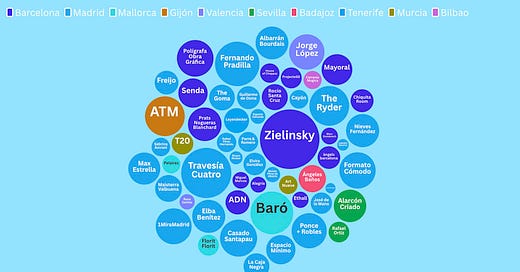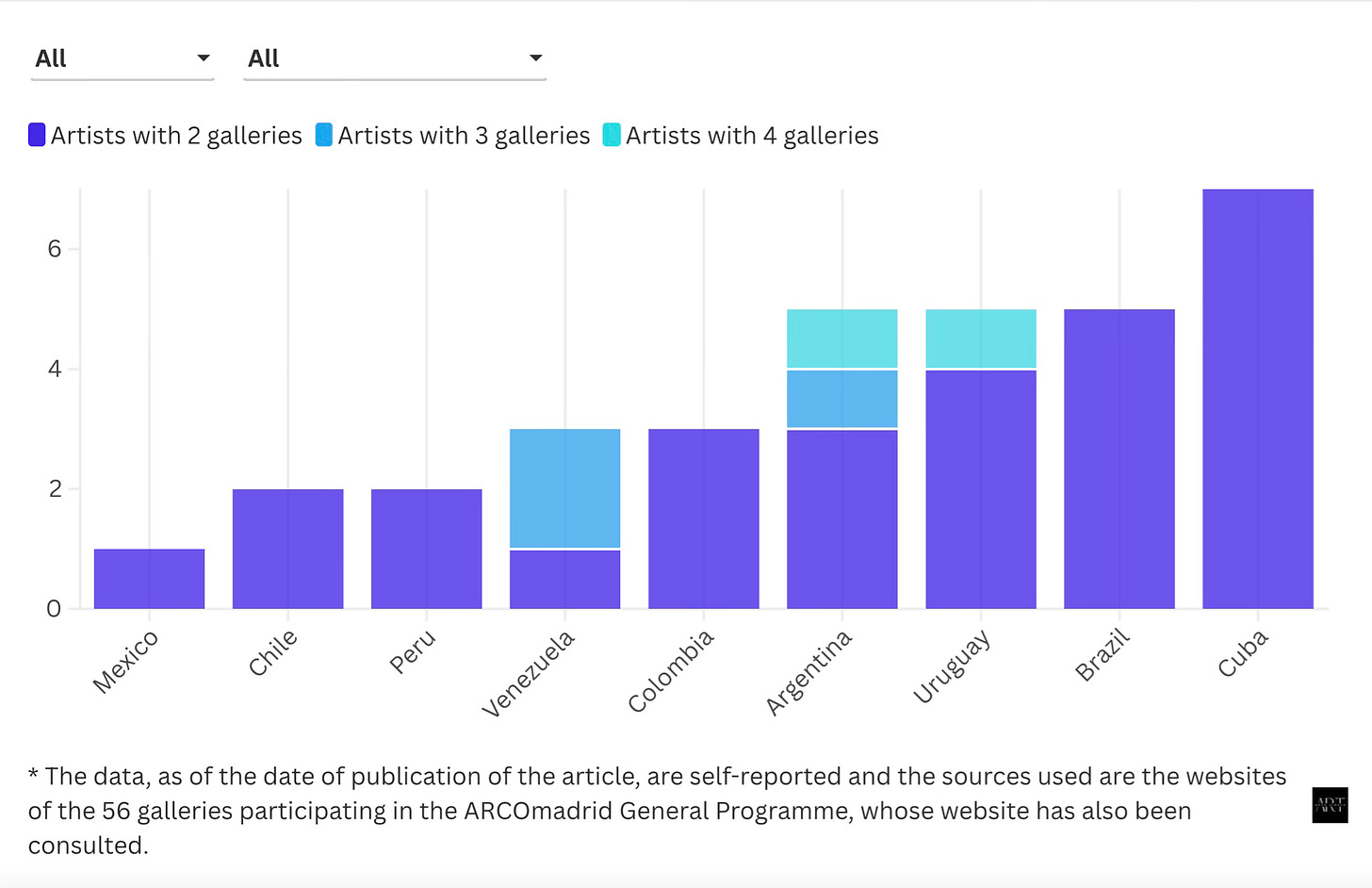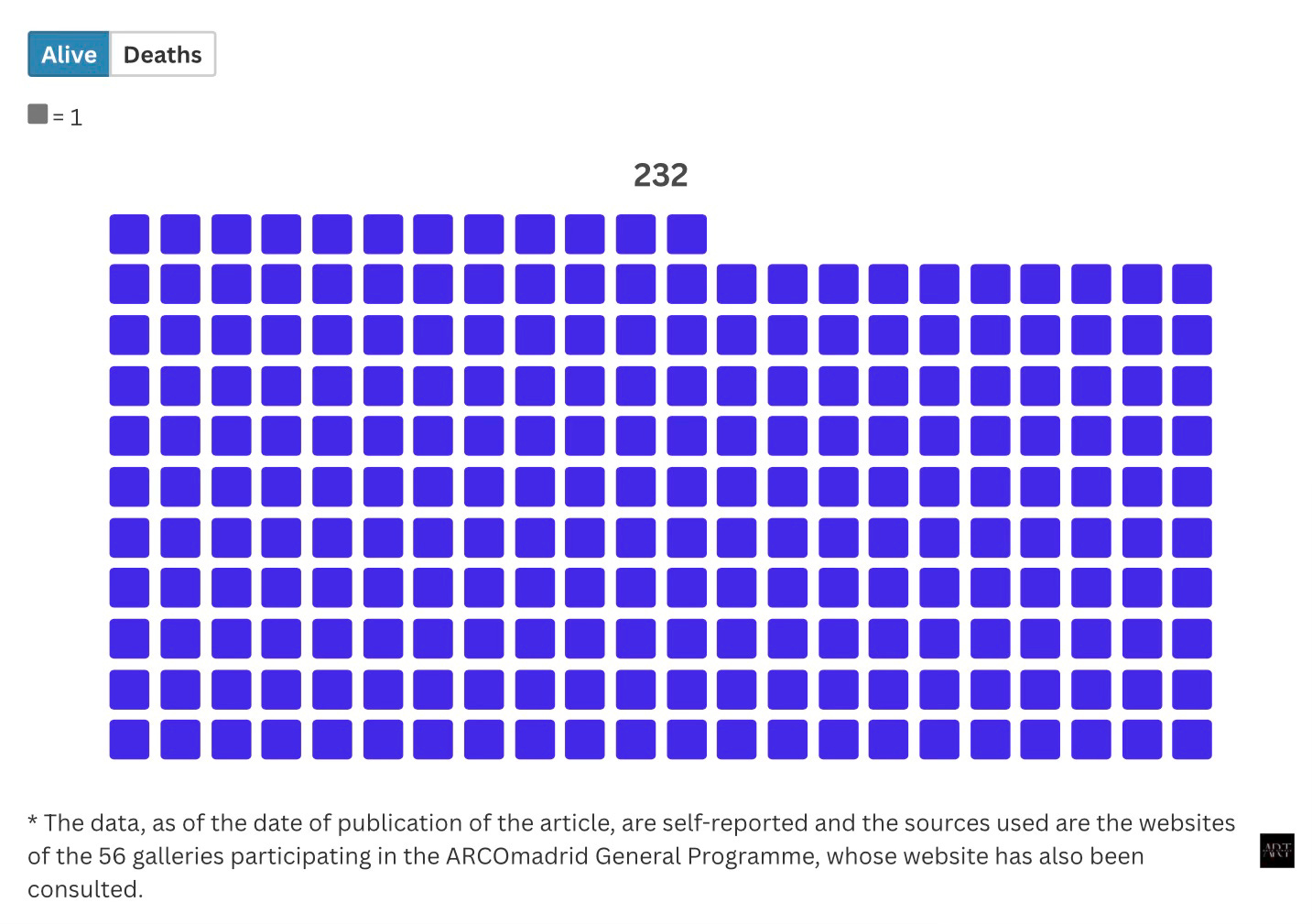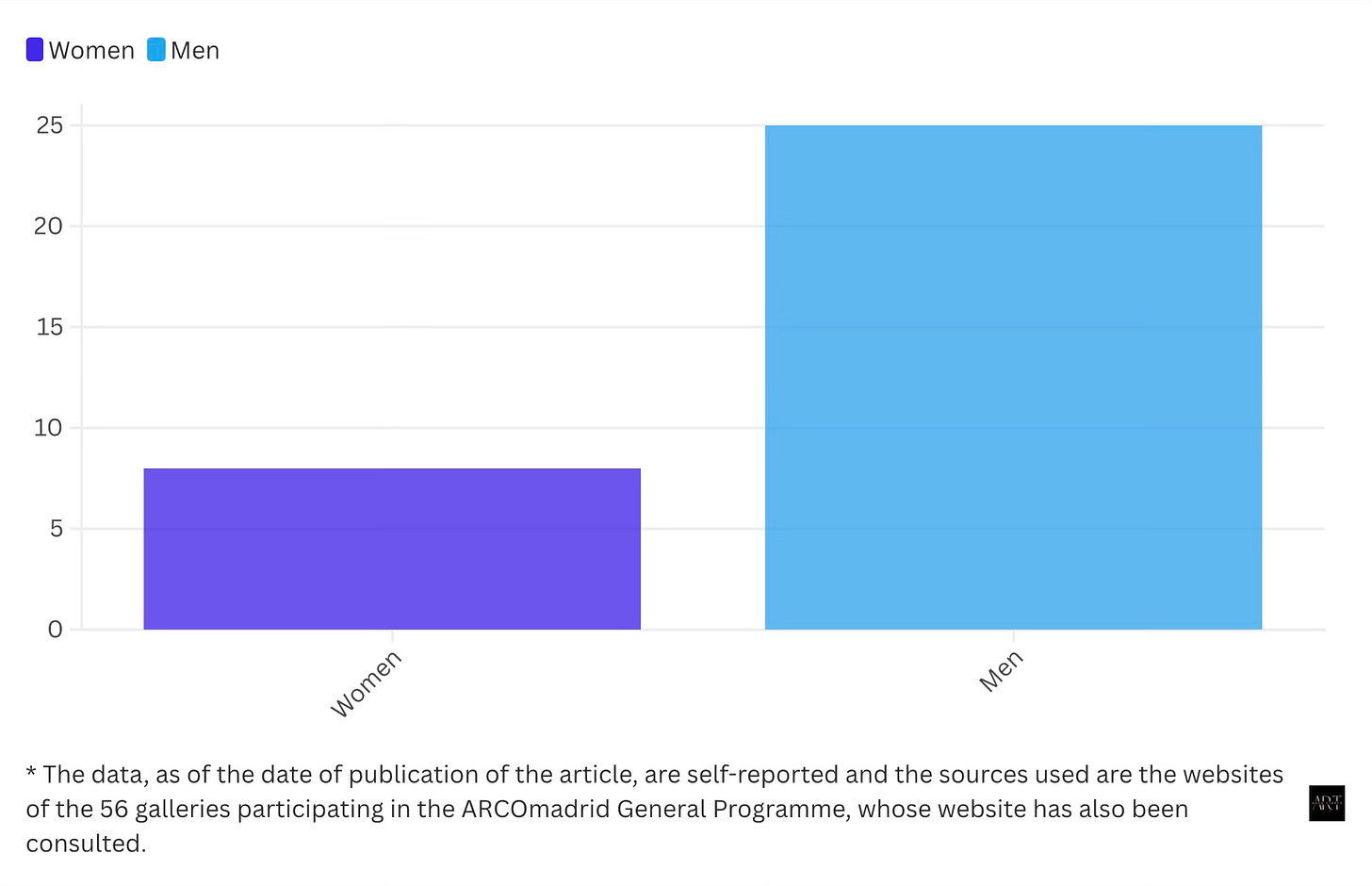Latin American Barometer in the Spanish Galleries of the ARCOmadrid General Programme
Visitors to the main section of the next edition will be able to discover 314 Latin American artists and collectives represented by 56 Spanish galleries.
Has ARCOmadrid lost the war against Art Basel Miami to become the great world fair of Latin American art?
As this is a rhetorical question, don't expect an answer.
The Spanish fair has won, and by a long shot, an important battle: to continue being the main bridge between the Latin American, Spanish, and European art scenes.
With less than a month until the 44th edition of ARCOmadrid, and as Spanish galleries participating in the General Program finalize the details of their arrival at the fair, it seems like a good opportunity to review the representation of Latin American artists among their rosters.
Before presenting the data collected through the visuals, I want to clarify a few aspects regarding the selection and collection of the information.
Of the 66 Spanish galleries participating in the general program, we have analyzed and/or taken into account, especially for statistical data, the 56 that have Latin American artists on their payrolls.
Latin American galleries with recent openings in Spain have not been included. However, the Fernando Pradilla Gallery, founded in 2001 in Madrid, has been included precisely because of its long history.
Artists born in other countries but whose work symbolizes their Latin American origin have been included, as have those who have developed most of their careers in Latin American countries.
Although the majority are represented by a single gallery, some are in more than one, so the total number of artists and collectives counting their representations in several galleries amounts to 314, but if we take into account the artist as a single value, the figure is 276.
Out of the 1,606 artists and collectives represented by 56 galleries, 314 are from Latin America (taking into account the points above). This means that nearly 20% of the featured artists are Latin American. On average, there are 5.6 Latin American artists represented per gallery.
The ranking of galleries based on the percentage of Latin American artists they represent is led by Zielinsky, located in Barcelona, with 89.5%. Following closely is Travesía Cuatro, based in Madrid, with 63.6%. Travesía Cuatro has recently added Tania Pérez Córdova (1979, Mexico) to its roster of represented artists. Additionally, both galleries operate offices in Brazil and Mexico, respectively.
When examining the ranking of galleries based on their representation of Latin American artists by city, it is no surprise that Madrid and Barcelona occupy the top two positions. However, the third place held by Palma de Mallorca may come as a pleasant surprise, largely thanks to the Baró gallery.
Out of the 276 artists, 243—approximately 90%—are represented by a single gallery. This could be seen as a form of exclusive representation within the Spanish market. While some may view this situation positively or negatively, it seems logical to me, given the size of the Spanish art market.
Seven Cuban artists have double representation, followed by five Brazilian artists. Additionally, it is worth noting the four galleries that represent a Uruguayan artist and an Argentine artist. We will name them all below.
What countries do they come from?
There are also a few surprises among the 15 countries of origin. At the top are the three most important countries in Latin America, Brazil, Argentina, and Mexico.
Some galleries are fond of certain countries, such as the Canarian Leyendecker with Chilean artists, Nieves Fernández with Mexicans and Argentines, or Rocío Santa Cruz with photographers from the Brazilian scene, to cite just a few examples.
In what decades were they born?
Artists born in the seventies, or what is called artists in the middle of their career and/or at the peak of their creativity, due to their maturity, dominate with 73. While in the case of men, it is also that decade with 53, in the case of women, it is the eighties with 22 artists.
However, the range is vast, from young artists born in 1996, such as the Dominican Bony Ramirez and the Peruvian Diego Balazs, to a living icon, such as the Argentine Julio Le Parc, born in 1928.
How many are alive?
We should undoubtedly celebrate the fact that nearly 84% of artists are alive. This is particularly encouraging when we look at the primary market; 231 artists are actively creating new work.
* Sadly, we must express our condolences for the passing of Cuban artist Waldo Balart, who was based in Madrid. He was born on February 10, 1931, and passed away on February 5, 2025, just a few hours after this article was written. He was about to turn 94 years old.
What is the gender gap?
The gender gap remains significantly evident, both overall and in the number of artists represented by multiple galleries, so this situation is far from satisfactory.
And finally:
Who are best represented?
Among the 33 best-represented artists featured in the 56 Spanish galleries participating in the General Program, notable mentions include the Uruguayan artist Joaquín Torres-García and the Argentine artist Julio Le Parc, both of whom have four. Additionally, the Argentine artist Liliana Porter, along with Venezuelans Carlos Cruz-Diez and Jesús Rafael Soto, each have three.
















